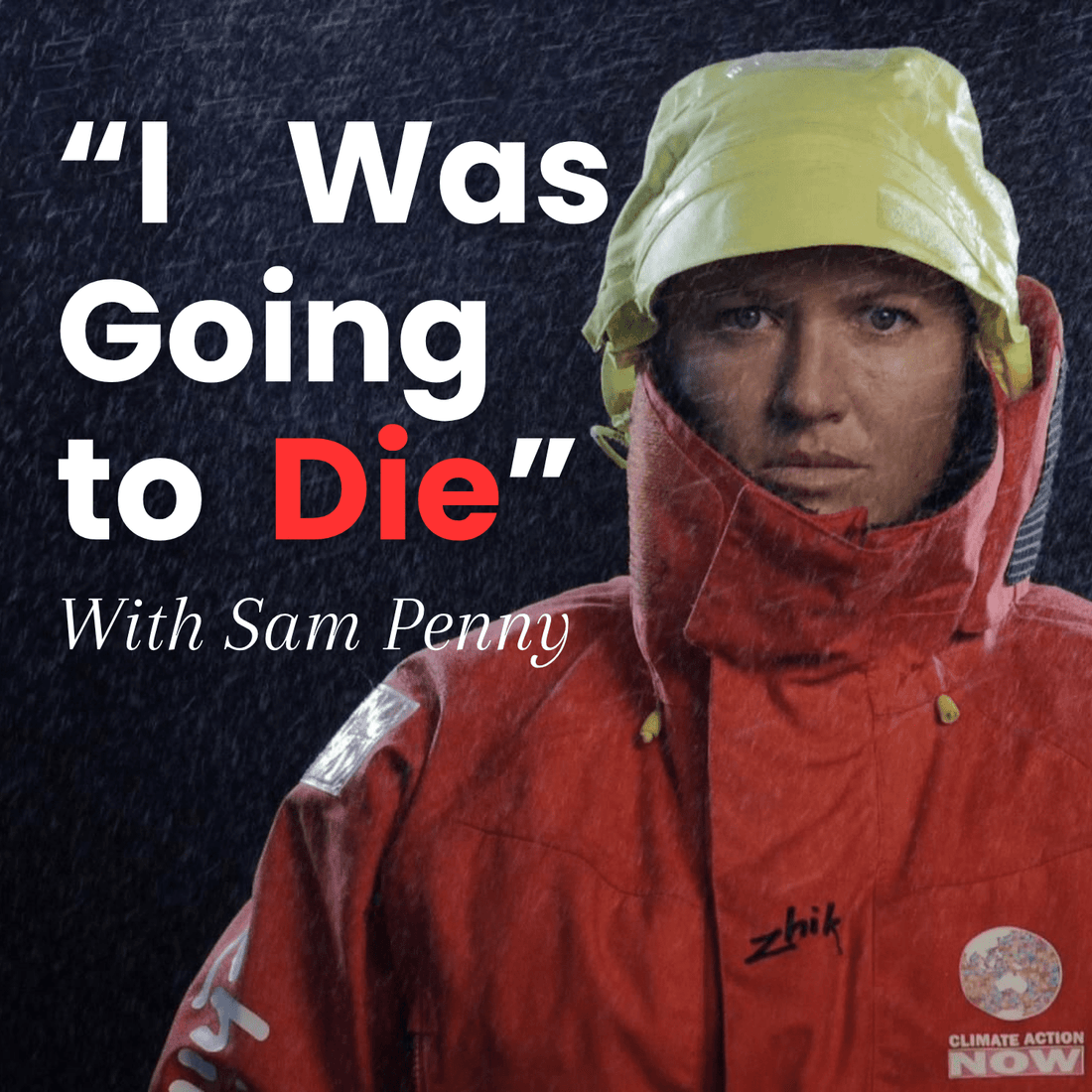
Fearless at Sea: How Lisa Blair Took on Antarctica (Twice) and Made History
Share
What do you do when your mast snaps in the middle of the Southern Ocean?
Not a wobble. Not a crack. Gone.
You're alone. You're injured. And you're 1,000 nautical miles from land in the most dangerous body of water on the planet. For most of us, that’s the end of the story.
For Lisa Blair, it was just the beginning.
In this special episode of Why’d You Think You Could Do That?, we sat down with Lisa Blair — world record-holding solo sailor, bestselling author of Facing Fear, climate advocate, and survivor of one of the most harrowing incidents ever recorded in solo ocean sailing.
Her journey isn’t just about sailing. It’s about mastering fear, preparing for the unthinkable, and doing it all in service of something much bigger: saving our oceans.
From Cook to Captain: The Accidental Sailor
Lisa didn’t grow up dreaming of sailing around Antarctica.
At 25, she was an aspiring art teacher. A university holiday job as a cook and cleaner on a charter yacht changed everything. What started as a summer job became an obsession. Within a year, she’d signed up for the Clipper Round the World Yacht Race.
It was there — during the long crossings, the self-reliance, and the symbiosis with the sea — that Lisa found her calling. Sailing was no longer a job. It was a mission.
The 2017 Antarctica Attempt: When Everything Went Wrong
Lisa set out in 2017 to become the first woman to sail solo, non-stop, and unassisted around Antarctica.
For 72 days, she battled brutal cold, monstrous seas, and unrelenting isolation. Then — disaster.
In 45-knot winds and eight-metre seas, her 22-metre mast snapped at deck level. It didn’t just fall. It tore into the side of her boat and began sawing through the hull with every crashing wave.
She was concussed. Her hand was crushed. Hypothermia was setting in. The waves were so violent they were breaking 50-tonne ropes like spaghetti.
There would be no rescue.
Lisa had minutes to act.
The Fight for Survival
Her survival came down to one thing: preparation.
Lisa had spent years visualising scenarios just like this. She’d rehearsed her dismasting procedures, built emergency kits, memorised the order of operations. That saved her life.
Still, it took every ounce of courage — and a three-hour crawl onto the bowsprit in freezing water — to save the boat and herself.
With her rigging destroyed and hull damaged, she built a makeshift sail system (called a jury rig) and motored, limped, and battled her way back to Cape Town over 12 days.
But she wasn’t done.
The Comeback: Finishing What She Started
Despite the trauma and public pressure to quit, Lisa repaired her boat and completed the journey. In doing so, she became the first woman to sail solo around Antarctica with one stop.
It wasn’t the record she had originally sought — but it was a triumph of grit, resilience, and an unbreakable commitment to finish what she started.
And she knew one thing for sure: she would be back.
The 2022 Record: Redemption in the Roaring Forties
In 2022, Lisa returned to the Southern Ocean.
This time, she was better prepared. More experienced. More cautious — and more determined.
She didn’t just beat the original record.
She smashed it.
In the harshest seas on earth, where the wind can rip the breath from your lungs and the waves rise like buildings, Lisa became the fastest person — male or female — to sail solo around Antarctica.
But this time, she wasn’t just chasing records.
Climate Action Now: Sailing With a Purpose
Lisa’s yacht is called Climate Action Now — and it’s more than a name.
Wrapped around her hull are thousands of Post-it Notes, each one submitted by someone pledging to take a small, personal action for the environment. Turn off the lights. Reuse a coffee cup. Pick up plastic at the beach.
It’s a visual reminder that every action matters.
She also turned her boat into a floating science lab, partnering with the Bureau of Meteorology and the Australian Institute of Marine Science. Her data — on microplastics, salinity, acidity, and more — is helping researchers understand the health of our oceans.
And what she found was alarming.
Despite being one of the most remote places on earth, every water sample she took around Antarctica contained microplastics — even near Point Nemo, the spot farthest from any land.
The Next Mission: Solo Around the Arctic (In a Boat Made from Lava)
What’s next for someone who’s circled Antarctica and lived to tell the tale?
Lisa’s planning the first-ever solo, non-stop, unassisted circumnavigation of the Arctic Circle — something that’s only recently become possible due to melting sea ice.
It’s a powerful and painful irony.
To drive home the message, Lisa is building a boat made from basalt fibre — essentially molten rock — bonded with bio-resins. It’s a radically sustainable material, stronger than fibreglass, and fully recyclable.
The boat will be light, fast, and equipped with pedal or rowing systems so she can continue without an engine — a must for an unassisted record attempt.
This record has never been completed by any human. Lisa Blair plans to be the first.
Facing Fear — Literally
Lisa is also the author of the bestselling book Facing Fear, which documents her journey, the psychological toll of dismasting, and what it takes to return after trauma.
The core message?
You don’t need to be special to do extraordinary things. You just have to start.
“I’m 5’2. I’m dyslexic. I’m not an Amazon warrior,” Lisa says. “I just tried. And then I kept trying again.”
Why’d She Think She Could Do That?
Lisa’s answer to the question at the heart of the podcast was simple:
“Because someone else had done something similar. And if they could do it, why couldn’t I?”
It’s not blind faith. It’s a decision to believe that your potential is expandable — and that courage is just fear in motion.
Key Takeaways from Lisa’s Journey
- Preparation saves lives — Lisa’s survival came down to training, visualisation, and pre-built systems.
- Every action matters — Her Climate Action Now campaign proves that millions of small changes add up to big impact.
- Courage is built — From 30-second jogs to 50km ultramarathons, courage compounds through consistent action.
- You don’t have to be special — You just have to start, and keep going.
Get Involved
- Submit your own climate action Post-it Note to Lisa’s next voyage: Visit Lisa’s website
- Read her book: Facing Fear
- Watch her documentary: Ice Maiden
- Follow the campaign: Climate Action Now on Instagram
Want More Like This?
Subscribe to Why’d You Think You Could Do That? wherever you get your podcasts.
Each week, we feature trailblazers, risk-takers, and people who decided to rewrite their limits. Because the real question is never “how?” — it’s “why not you?”


